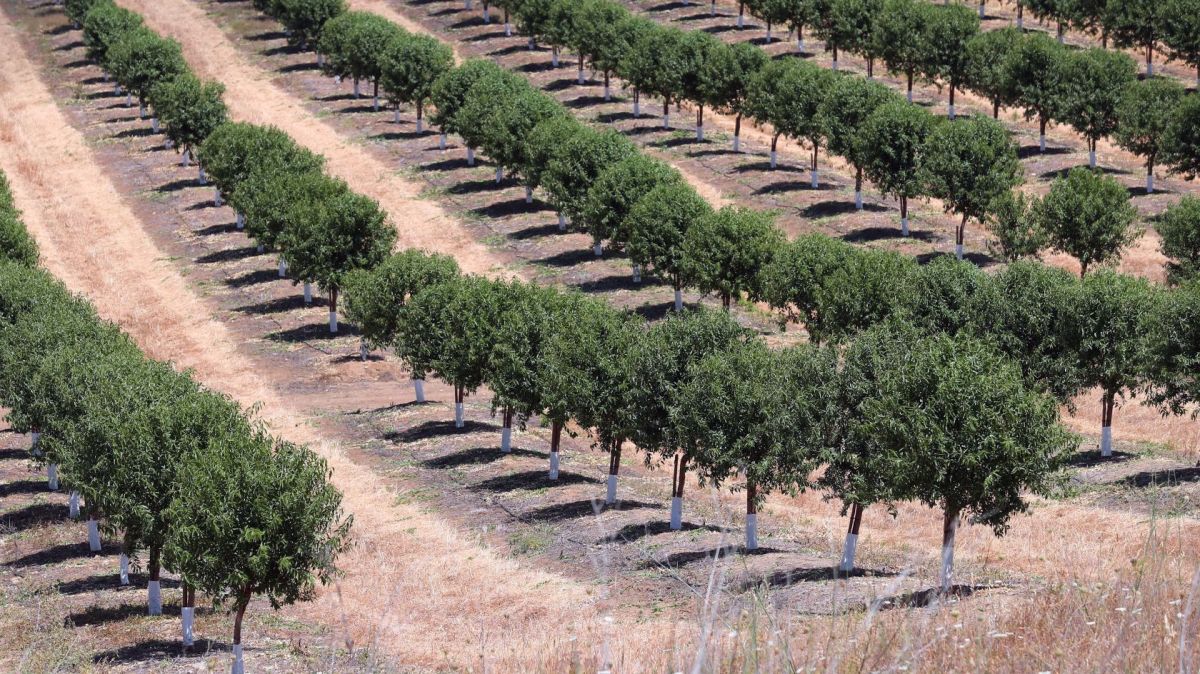Cut flowers and sustainability have long been viewed as incompatible. But a new wave of eco-conscious floristry is transforming the way florists are growing, sourcing and designing their bouquets.
Sustainability is no longer just a buzzword, but the foundation of the designs blooming at this year’s RHS Chelsea Flower Show.
“The RHS has endorsed no foam,” says Colin Gray, managing director of Lavender Green Flowers. “That’s going across RHS Chelsea Flower Show and Chelsea in Bloom.” That shift is more than symbolic. In 2025, sustainability isn’t just a preference but an expectation.
“Everyone’s profiling seasonality and British [grown flowers],” Gray adds. “If it’s out of season, there’s no place for it – certainly not at the RHS.”
Still, this purist approach comes with challenges. “We’ve had some struggles with it this year, with this unique weather we’ve had,” says Gray. But ultimately, it’s a growing pain worth enduring.
One standout trend is the integration of plants with cut flowers – a strategy that adds longevity and a more layered, living aesthetic. “It allows a legacy of a display to go on,” explains Gray.
Legacy is a recurring theme in Gray’s ethos. “We actually ensure 90% of our flowers go on to charitable donations post-event,” he says. “Giving displays a second life – sending them to charities or using them at events – extends their impact well beyond showtime.”
Many sustainable practices have been in development for years, championed by the RHS. “No dyed flowers, no faux within reason, no foam – those have become habits we’ve adopted over time.”
Gray also highlights the rise of recycled and repurposed materials in displays – concrete vases, fabrics and structures – along with the growing rejection of single-use plastics.
This year, sourcing locally is a top priority. “Buying British is constantly at the top of the agenda,” says Gray. “If we’re not buying British, we’re buying from sustainable farms that manage water well, use renewable energy, and consider transport emissions.”

Foam, once a staple in floral displays, is being actively replaced. “There’s no reason to be using foam at all,” says Gray. “We’re trialling a new product called Phoam Labs – now on its fifth iteration – but it’s not about a straight swap. It’s about changing how we think.”
Even moss, a common alternative, isn’t perfect. “Moss is a potential carbon sink,” Gray warns, “so taking it from forests raises its own environmental concerns.” Instead, he prefers water-based designs: “Water is key. We would never use [foam] for something like this.”
Visually, sustainable floristry is redefining what people expect to see at events like the RHS Chelsea Flower Show. “We’ve come a long way from big, blousy designs,” says Gray. “Now, there’s more of a locally British and wild look.”
Foliage has also therefore emerged from the background to take centre stage. “[Florists are] using foliage less as a secondary element, allowing it to really lead the design.”

This wilder, foraged aesthetic includes flowers that might be found in hedgerows rather than greenhouses. “Unusual flowers – ones people may see in the wild – are gaining popularity over iconic peonies and roses,” Gray notes.
Displays at Chelsea this year aim to strike a balance between Instagram-worthy visuals and deeper ecological responsibility. “It will be a combination of both,” says Gray. “We’re seeing shapes and designs that are a bit more unusual but still seasonal.”
“It will be creating more of a designed look profiling seasonality, but also creating shapes and designs that are perhaps unusual.”
Celebrating seasonality also brings the potential of more interesting displays. “There is more excitement that we can give,” says Gray, “using things like bearded irises, as opposed to classic irises – or the varieties that people don’t necessarily see.”
Biodiversity is a growing concern, especially among those cultivating wildflower farms. “Avoiding pesticides and protecting soil integrity is key,” says Gray. “If we’re using plants, we’re making sure we’re not using peat.”
For home gardeners looking to embrace sustainable floristry, Gray’s tip is to embrace the wild and the wonderful. “There is a thing called No Mow May – using wildflowers and meadows and allowing the garden to partially rewild itself during the season.”
He also encourages people to turn their gardens into cutting gardens. “There’s real joy in bringing your own flowers into the home and celebrating your garden’s success.”
When it comes to the future of our flowers, Gray urges gardeners to plant for the future. “London, specifically, is going to be the same temperatures in 2050 as Barcelona.” As such, “we should start to think about drought-tolerant [plants] that are going to be a more natural choice for the environment that is coming.”
As the climate crisis reshapes our world, the RHS Chelsea Flower Show is proving that beauty and responsibility can thrive side by side.
From ethical sourcing to inventive, low-impact design, floristry is evolving, and for Gray, the future is clear: “We should be putting plants into the future, rather than just for this year or next year, based on fashion.















